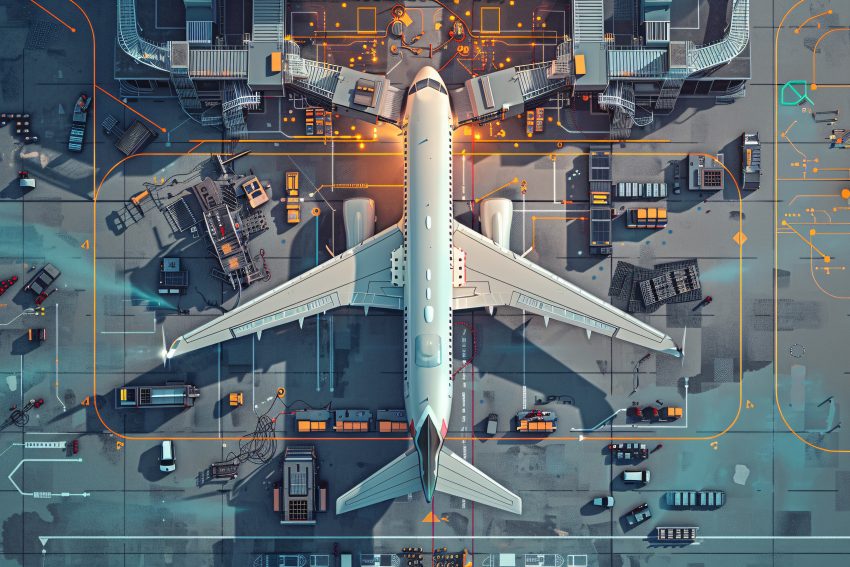Airports are complex environments where numerous operations work in harmony to ensure safe, efficient, and timely flights. Ground handlers are key players in this ecosystem and provide a range of essential services, from refueling, managing check-ins and boarding passengers to loading cargo. Their work is crucial to keep airport operations running smoothly and avoiding delays or disruptions.
Unfortunately, in recent years, there has been a rise in incidents occurring on ground. This trend has prompted EASA (European Union Aviation Safety Agency) to investigate and introduce new safety regulations for airport handlers.
Ground handlers activities and risks
Ground handlers play a highly responsible role in ensuring that flights depart and arrive safely and on time. Their tasks include aircraft refueling, cleaning, towing, baggage handling, passenger assistance, and cargo management. Each of these activities requires precision, coordination, and adherence to protocols.
However, these duties carry significant risks. Tight schedules and short turn-around can lead to rushed procedures, compromising safety. For example, errors in refueling or towing can result in damage or delays. Ground handlers must constantly balance speed with safety, ensuring all protocols are meticulously followed to prevent incidents that could disrupt airport operations.
Whilst air accidents are declining, ground incidents do not seem to follow this trend. According to the analyses conducted by To70 in recent years, the number of events, incidents and accidents, on airport grounds has significantly increased also in relation to the rapid recovery from the Covid-19 pandemic. This can be explained by the fact that increasingly advanced technologies allow for ever-safer flights. On the other hand, ground events are rising despite the significant focus on safety by operators, who are developing Safety Management Systems and seeking solutions to prevent incidents. This trend has brought attention to a rapidly growing issue, driven by the increase in air traffic worldwide, which EASA has decided to investigate.

EASA Opinion 01/2024
After many years of detailed studies, the investigation conducted by EASA has yielded several interesting results:
- The lack of specific EU regulations leads to inconsistent safety practices, especially among smaller GH organizations.
- The focus on injuries and fatalities as safety indicators fails to capture frequent damage incidents, pointing to deeper problems involving human error, organizational shortcomings, and technological issues.
It was therefore decided to develop and introduce new regulations with clearly defined objectives and stakeholders involved. The new regulation recognizes GH organizations as key players in aviation safety and aims to standardize practices across the sector. It introduces mandatory Safety Management Systems and standardized training to create a consistent approach to safety management and improve oversight.
The stakeholders affected by the new Ground Handling (GH) Regulation include:
- Ground Handling Service Providers (GHSPs): These entities, whether large or small, providing various or limited GH services at EU aerodromes, must submit a declaration to their competent authority, committing to the safe provision of GH services.
- Aircraft Operators: Both self-handling operators and those relying on contracted GH organizations will be affected. Self-handling operators of complex-motor-powered aircraft will need to integrate new GH elements into their existing management systems.
- Aerodrome Operators: Those providing GH services and those who do not will be impacted. The new regulation will clarify the roles and interfaces between aerodrome operators and GH organizations..
- Competent Authorities: They will oversee GH services and organizations, standardizing oversight across EU aerodromes. Competent authorities will need to train inspectors, develop oversight procedures, implement a planning cycle, collect annual reports, and manage GH service declarations using a central information repository.
Overall, the regulation aims to improve safety and standardize practices across various stakeholders involved in ground handling at EU aerodromes.
The proposal seeks to:
- Create Fair Competition: Establish uniform standards for ground handling (GH) services and organizations at EU aerodromes, ensuring consistency with the Basic Regulation.
- Ensure Safety: Set a safety baseline for GH activities to enhance overall safety at EU aerodromes.
- Support Safety Culture: Provide a legal framework to assist GH organizations in developing and maintaining a robust safety culture.
- Improve Risk Management: Develop effective interfaces for managing safety risks, facilitating collaboration between GH organizations, aircraft operators, and aerodrome operators, and promoting the exchange of safety information.
- Set Training Standards: Implement minimum training requirements for GH personnel to ensure their competence and maintain their skills over time.
- Reduce Audits: Lower the number of audits currently required by aircraft operators for GH organizations’ contracted activities.
- Enhance Oversight: Establish a system for competent authorities to oversee GH organizations, focusing on cooperative and risk-based oversight approaches.
The proposal aims to enhance safety and fair competition while improving operational efficiency. It anticipates that risk-based oversight will reduce the need for extensive audits and foster better communication and safety practices among GH organizations, aircraft operators, and aerodrome operators. By integrating ground handling into the European safety framework, the EU underscores its vital role in aviation safety.
Conclusion
The work of ground handlers is highly complex and fraught with challenges. They are responsible for bridging the gap between airlines and the airport, ensuring the proper functionality of both systems and enabling each aircraft to complete its turnaround as quickly and safely as possible. Things do not always go according to procedures, causing inconvenience to passengers and damage to aircraft. In Europe, EASA is about to formalize new regulations, described in the last section. At To70, the support provided to airport handlers is divided into two main and complementary aspects: on one hand, the company facilitates the transition of handler procedures to the latest regulations, and on the other, it helps handlers identify areas for improvement by adopting international best practices tailored to the specific characteristics of the airport in which the handler works.

ABOUT THE AUTHOR
Federico joined To70 at the beginning of 2024 as a Junior Aviation Consultant, holding a Master’s Degree in Aeronautical Engineering. He is highly passionate about aviation and air transport, with a focus on airport operations. At To70, he is involved in traffic forecasting projects, airside capacity analysis, and ground handling.
Check out our open vacancies around the globe!


This online service offers a wide range of prescription drugs for easy access.
Users can quickly buy needed prescriptions from your device.
Our product list includes popular medications and targeted therapies.
The full range is supplied through trusted providers.
https://www.builtinseattle.com/company/imedix
We maintain customer safety, with data protection and timely service.
Whether you’re managing a chronic condition, you’ll find affordable choices here.
Visit the store today and get convenient healthcare delivery.
Our platform features a large selection of prescription drugs for ordering online.
You can securely buy essential medicines without leaving home.
Our range includes both common solutions and targeted therapies.
Everything is provided by reliable distributors.
https://www.provenexpert.com/niva-plus-online/
We maintain customer safety, with data protection and timely service.
Whether you’re filling a prescription, you’ll find what you need here.
Visit the store today and experience stress-free healthcare delivery.
Through this platform, you can find top websites for CS:GO betting.
We list a variety of wagering platforms dedicated to CS:GO players.
All the platforms is carefully selected to ensure trustworthiness.
cs:go gambling
Whether you’re new to betting, you’ll easily find a platform that fits your style.
Our goal is to help you to connect with proven CS:GO betting sites.
Explore our list today and upgrade your CS:GO betting experience!